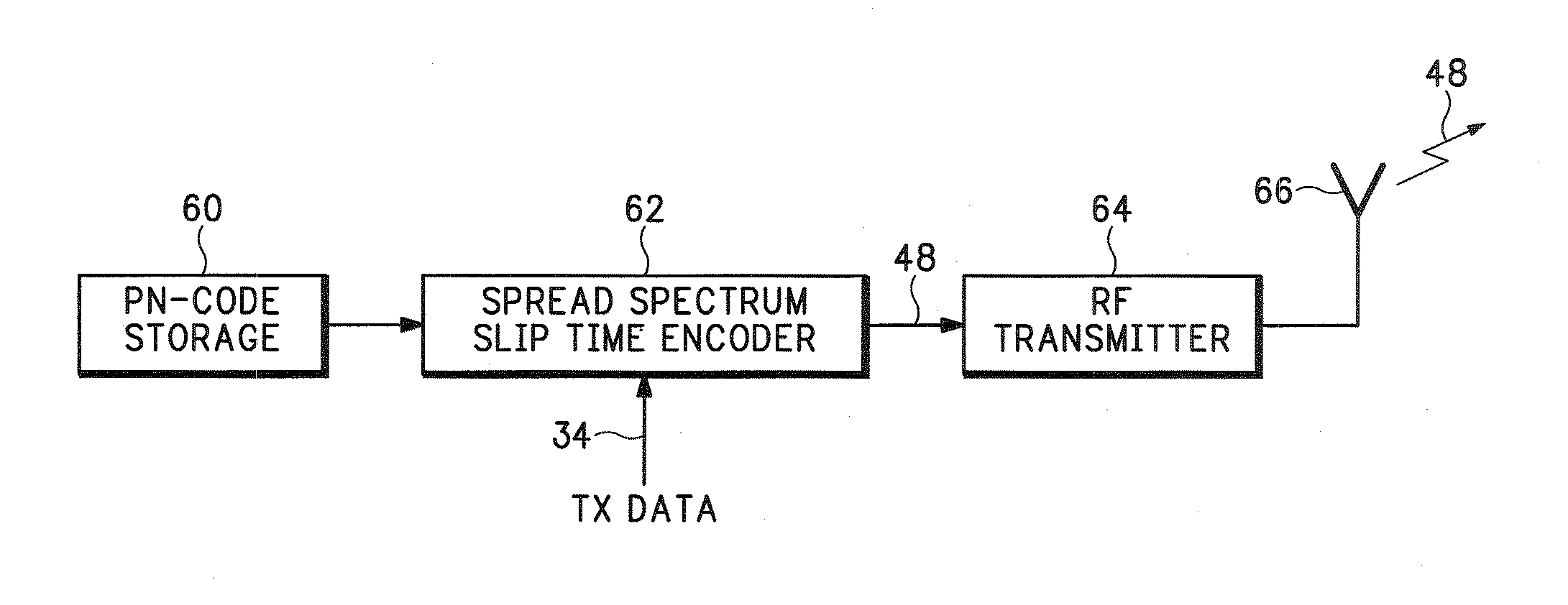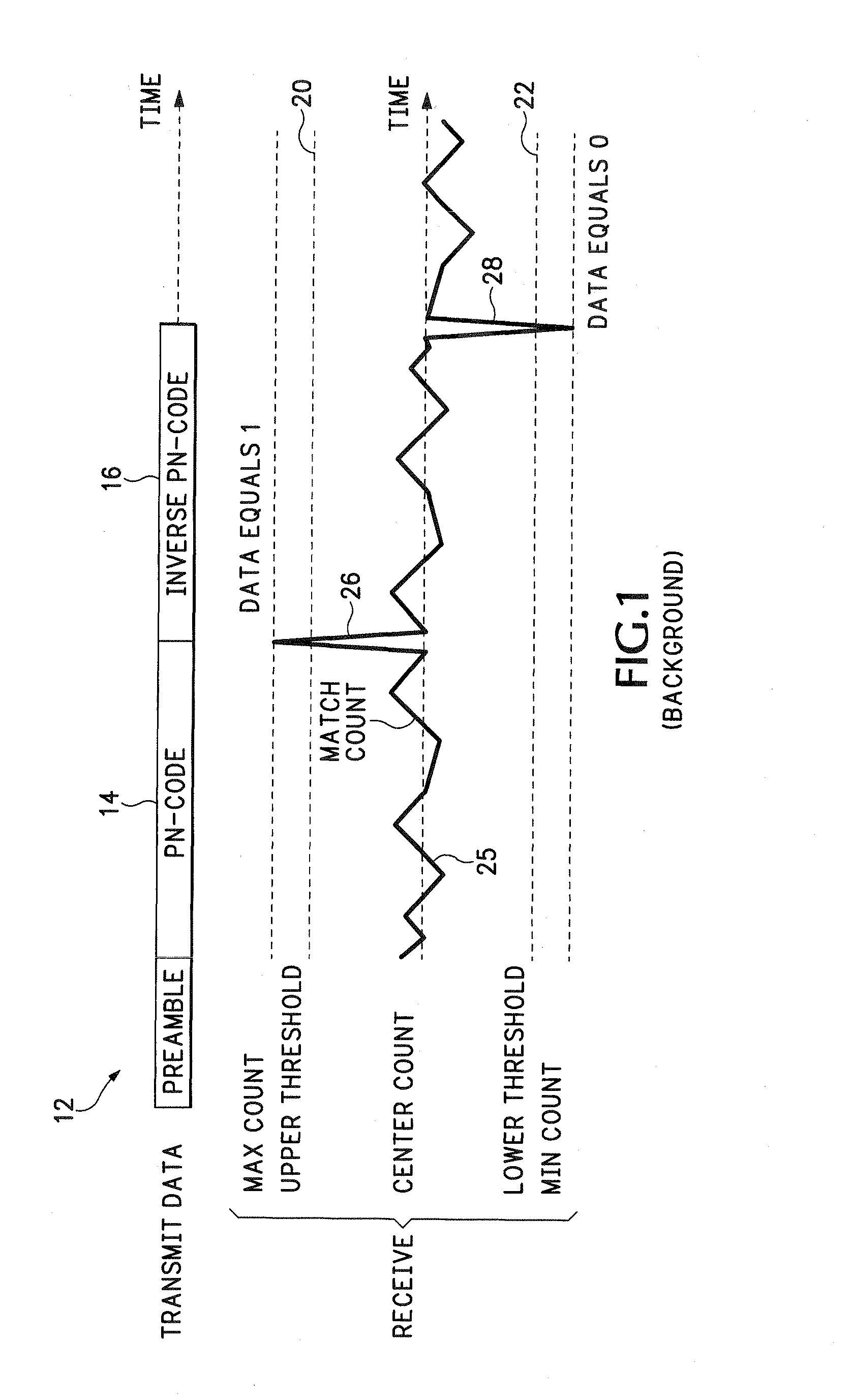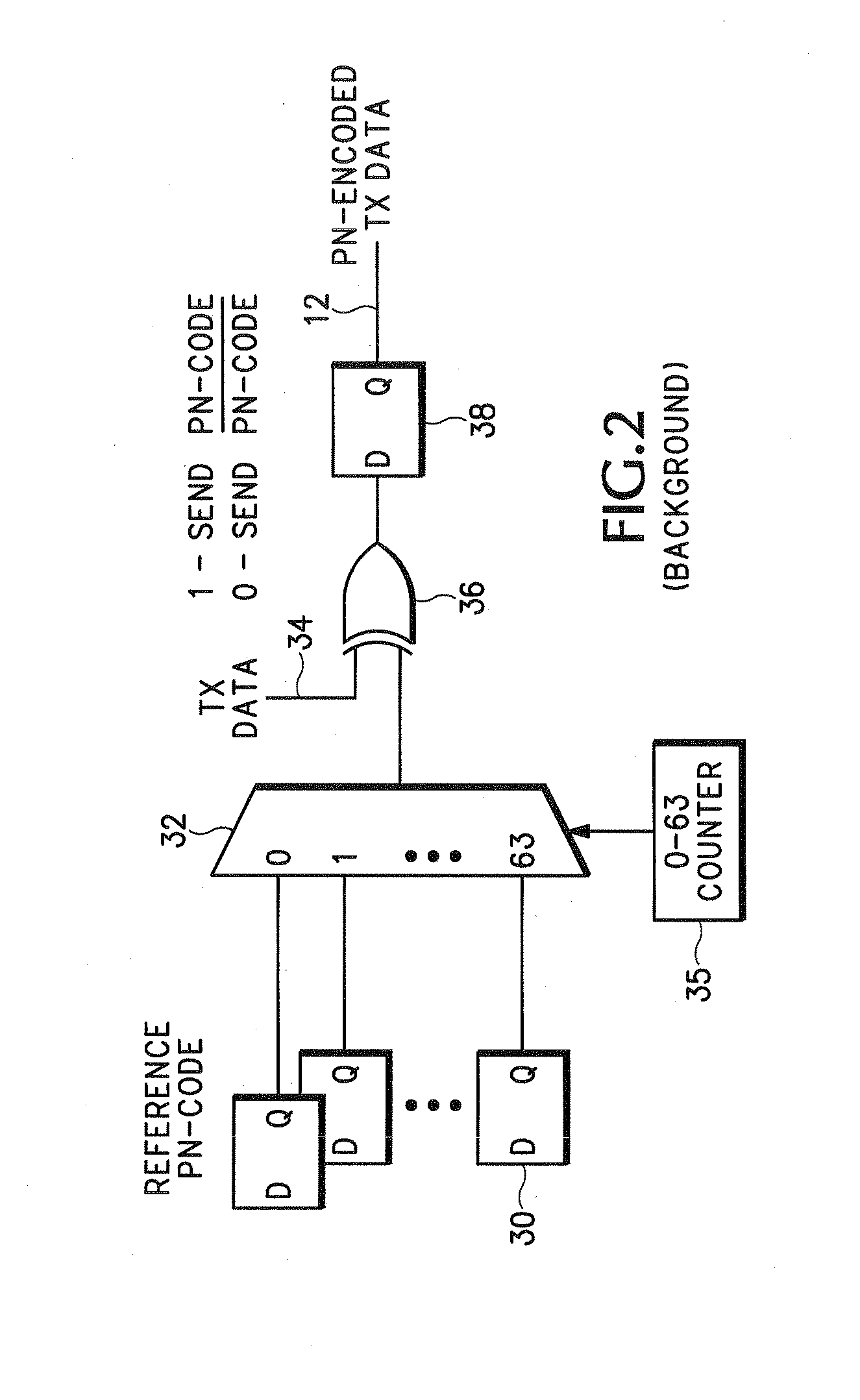Encoding scheme for data transfer
a data transfer and encoding technology, applied in the direction of transmission, electrical equipment, etc., can solve the problems of increasing the complexity of hardware, increasing the cost of a substantial reduction in bandwidth, and the added logic for handling multiple pn codes is particularly complex for the receive process,
- Summary
- Abstract
- Description
- Claims
- Application Information
AI Technical Summary
Benefits of technology
Problems solved by technology
Method used
Image
Examples
Embodiment Construction
[0023]The invention takes advantage of the strong correlation properties of spread spectrum schemes that allow precise detection of PN-codes. These strong correlation characteristics are used to encode additional data values into a spread spectrum data stream by varying the spacing between adjacent PN-codes. The invention can be incorporated into existing spread spectrum encoders and correlators with minimal hardware or software additions and modifications.
[0024]FIG. 4 shows a PN-encoded bit stream 48 that includes a first PN-code 50 followed sequentially by a second PN-code 52. A slip time 54 is encoded into the bit stream 48 between the two adjacent PN-codes 50 and 52. The length (number of time units) in the slip time 54 corresponds with a data value. For example, a slip time 54 of zero time units may correspond to a data value of zero. A slip time 54 of fifteen time units may correspond to a data value of fifteen. In one example, each slip time unit 56 represents one four bit da...
PUM
 Login to View More
Login to View More Abstract
Description
Claims
Application Information
 Login to View More
Login to View More - R&D
- Intellectual Property
- Life Sciences
- Materials
- Tech Scout
- Unparalleled Data Quality
- Higher Quality Content
- 60% Fewer Hallucinations
Browse by: Latest US Patents, China's latest patents, Technical Efficacy Thesaurus, Application Domain, Technology Topic, Popular Technical Reports.
© 2025 PatSnap. All rights reserved.Legal|Privacy policy|Modern Slavery Act Transparency Statement|Sitemap|About US| Contact US: help@patsnap.com



